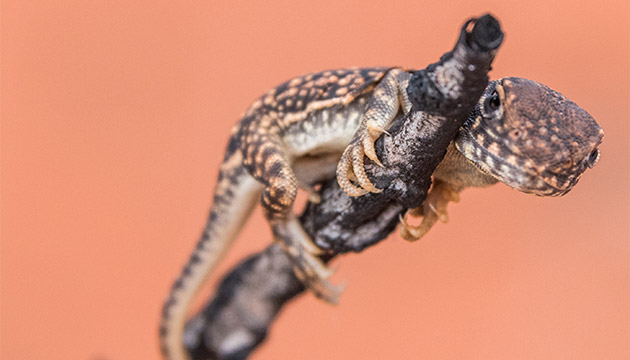A team of scientists is revealing the secret lives of waterholes in Central Australia and the myriad creatures they sustain.
Story by Amanda Burdon
Deep within the arid red heart of the Northern Territory, weathered sandstone buttresses and dramatic gorges are the star attractions of Watarrka National Park. But twice this year natural features of another kind – the permanent and short-lived waterholes that sustain life in this harshest of environments – lured a small team of scientists.
The group, from Charles Darwin University (CDU) and the University of Canberra (UC), visited Watarrka, 330 kilometres south-west of Alice Springs, to learn more about the land-based animals that rely on these precious water bodies and how vulnerable their micro-habitats may be to future climate change and human disturbance.
The chain of deep, perennial waterholes and shallower temporary pools are reminders of a much wetter time, when larger creeks and rivers coursed through the desert landscape. Today, some remain fed by groundwater or spring to life after periodic flooding. The sandstone escarpment acts like a giant sponge, absorbing rain and then slowly releasing it through its porous rock. Some of the pools rarely dry out; others are empty within six months of rain.
Project supervisor Jenny Davis, an ecologist who heads up the School of Environment at CDU, has worked in and around waterholes in arid Australia for almost 30 years. She describes them as “hidden oases” that are of great cultural, scientific and conservation value.
“Watarrka is the jewel in the crown of arid Australia and some of its waterholes support species that are Gondwanan relicts,” Jenny says. “They are telling us much about Australia’s past environment and we believe they will act as important refuges in the future.”
This story excerpt is from Issue #108
Outback Magazine: Aug/Sep 2016










